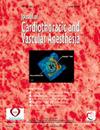预测心脏手术后阿片类药物使用的程度:一项初步研究。
IF 2.3
4区 医学
Q2 ANESTHESIOLOGY
Journal of cardiothoracic and vascular anesthesia
Pub Date : 2025-02-01
DOI:10.1053/j.jvca.2024.11.037
引用次数: 0
摘要
目的:本研究旨在检验反映抑郁、焦虑、愤怒和疼痛灾难化的负面影响表型是否能预测心脏手术后住院和门诊阿片类药物使用的结果。设计:在一项单中心前瞻性观察性先导研究中,作者在术前获得了负面影响和阿片类药物相关表型的有效测量,并在术后30天随访中收集了阿片类药物使用和滥用的相关结果。单位:第四医学中心。参与者:最终数据集包括30名在2022年8月19日至2023年8月29日期间接受选择性心脏手术的成年患者。干预措施:没有。测量方法和主要结果:阿片类药物结局包括:(1)住院患者术后阿片类药物使用总量(以毫克吗啡当量为单位),(2)30天随访期间门诊处方阿片类药物使用自我报告天数(时间轴回访法),(3)30天随访期间阿片类药物滥用相关行为数量(当前阿片类药物滥用测量-9)。使用泊松分布的广义线性模型分析表明,术前更大的抑郁、焦虑、愤怒、疼痛灾难和阿片类药物滥用风险(由疼痛患者的筛查和阿片类药物评估-修订)均与住院和门诊术后阿片类药物使用以及30天随访时更多的阿片类药物滥用相关行为显著(p < 0.002)相关(p < 0.001)。结论:术前负面情绪(抑郁、焦虑、愤怒和疼痛灾难化)水平较高的患者在心脏手术后更多地使用住院和门诊阿片类镇痛药,这一模式与非心脏手术人群相似。结果支持进一步研究患者特异性阿片类药物处方方法,以降低心脏手术后阿片类药物使用障碍的风险。本文章由计算机程序翻译,如有差异,请以英文原文为准。
Predicting Extent of Opioid Use Following Cardiac Surgery: A Pilot Study
Objectives
This study was designed to test whether a negative affect phenotype reflecting depression, anxiety, anger, and pain catastrophizing predicts inpatient and outpatient opioid use outcomes following cardiac surgery.
Design
In a single-center prospective observational pilot study, the authors obtained validated measures of negative affect and opioid-related phenotype preoperatively and collected opioid use and opioid misuse-related outcomes at 30-day postoperative follow-up.
Setting
Quaternary medical center.
Participants
The final dataset included 30 adult patients undergoing elective cardiac surgery procedures between August 19, 2022, and August 29, 2023.
Interventions
None.
Measurements and Main Results
Opioid outcomes included: (1) total inpatient postoperative opioid use (in milligram morphine equivalents), (2) self-reported number of days that prescribed outpatient opioids were used during the 30-day follow-up period (Timeline Followback method), and (3) number of opioid misuse-related behaviors (Current Opioid Misuse Measure–9) at 30-day follow-up. Generalized linear model analyses using a Poisson distribution indicated that greater preoperative depression, anxiety, anger, pain catastrophizing, and opioid misuse risk (indexed by the Screener and Opioid Assessment for Patients with Pain- Revised) were all significantly (p < 0.002) associated with greater inpatient and outpatient postoperative opioid use, as well as more opioid misuse-related behaviors at 30-day follow-up (p < 0.001).
Conclusions
Patients with higher preoperative levels of negative affect (depression, anxiety, anger, and pain catastrophizing) use more inpatient and outpatient opioid analgesics following cardiac surgery, a pattern similar to noncardiac surgery populations. Results support further study of patient-specific approaches to opioid prescribing to reduce the risk for opioid use disorder post–cardiac surgery.
求助全文
通过发布文献求助,成功后即可免费获取论文全文。
去求助
来源期刊
CiteScore
4.80
自引率
17.90%
发文量
606
审稿时长
37 days
期刊介绍:
The Journal of Cardiothoracic and Vascular Anesthesia is primarily aimed at anesthesiologists who deal with patients undergoing cardiac, thoracic or vascular surgical procedures. JCVA features a multidisciplinary approach, with contributions from cardiac, vascular and thoracic surgeons, cardiologists, and other related specialists. Emphasis is placed on rapid publication of clinically relevant material.

 求助内容:
求助内容: 应助结果提醒方式:
应助结果提醒方式:


